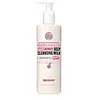What's inside
What's inside
 Key Ingredients
Key Ingredients

 Benefits
Benefits

 Concerns
Concerns

No concerns
 Ingredients Side-by-side
Ingredients Side-by-side

Water
Skin ConditioningGlycerin
HumectantButylene Glycol
HumectantSodium Hydrolyzed Potato Starch Dodecenylsuccinate
Zea Mays Starch
AbsorbentPolysorbate 20
EmulsifyingPoloxamer 188
EmulsifyingHydroxyacetophenone
AntioxidantAcrylates/C10-30 Alkyl Acrylate Crosspolymer
Emulsion StabilisingPEG-100 Stearate
Glyceryl Stearate
EmollientEthylhexylglycerin
Skin ConditioningDisodium EDTA
Sodium Polyacrylate
AbsorbentSodium Hydroxide
BufferingSodium Hyaluronate
HumectantWater, Glycerin, Butylene Glycol, Sodium Hydrolyzed Potato Starch Dodecenylsuccinate, Zea Mays Starch, Polysorbate 20, Poloxamer 188, Hydroxyacetophenone, Acrylates/C10-30 Alkyl Acrylate Crosspolymer, PEG-100 Stearate, Glyceryl Stearate, Ethylhexylglycerin, Disodium EDTA, Sodium Polyacrylate, Sodium Hydroxide, Sodium Hyaluronate
Water
Skin ConditioningIsohexadecane
EmollientCyclopentasiloxane
EmollientDicaprylyl Carbonate
EmollientButylene Glycol
HumectantGlycerin
HumectantSimmondsia Chinensis Seed Oil
EmollientCetearyl Alcohol
EmollientCyclohexasiloxane
EmollientGlyceryl Stearate
EmollientPEG-100 Stearate
Sodium Polyacrylate
AbsorbentPhenoxyethanol
PreservativeCaprylyl Glycol
EmollientSodium Benzoate
MaskingDipropylene Glycol
HumectantPropylene Glycol
HumectantQuillaja Saponaria Bark Extract
CleansingEthylhexylglycerin
Skin ConditioningLycium Barbarum Fruit Extract
AstringentParfum
MaskingTetrasodium EDTA
Panax Ginseng Root Extract
EmollientPrunus Persica Fruit Extract
AbrasiveGlucosamine Hcl
Urea
BufferingSaccharomyces Cerevisiae Extract
Skin ConditioningAlgae Extract
EmollientSorbitol
HumectantSalvia Hispanica Seed Oil
MoisturisingGynostemma Pentaphyllum Leaf Extract
Skin ConditioningEucalyptus Globulus Leaf Oil
PerfumingLinalool
PerfumingCitric Acid
BufferingPotassium Sorbate
PreservativeThymus Vulgaris Oil
MaskingSodium Hydroxide
BufferingAscorbic Acid
AntioxidantWater, Isohexadecane, Cyclopentasiloxane, Dicaprylyl Carbonate, Butylene Glycol, Glycerin, Simmondsia Chinensis Seed Oil, Cetearyl Alcohol, Cyclohexasiloxane, Glyceryl Stearate, PEG-100 Stearate, Sodium Polyacrylate, Phenoxyethanol, Caprylyl Glycol, Sodium Benzoate, Dipropylene Glycol, Propylene Glycol, Quillaja Saponaria Bark Extract, Ethylhexylglycerin, Lycium Barbarum Fruit Extract, Parfum, Tetrasodium EDTA, Panax Ginseng Root Extract, Prunus Persica Fruit Extract, Glucosamine Hcl, Urea, Saccharomyces Cerevisiae Extract, Algae Extract, Sorbitol, Salvia Hispanica Seed Oil, Gynostemma Pentaphyllum Leaf Extract, Eucalyptus Globulus Leaf Oil, Linalool, Citric Acid, Potassium Sorbate, Thymus Vulgaris Oil, Sodium Hydroxide, Ascorbic Acid
Ingredients Explained
These ingredients are found in both products.
Ingredients higher up in an ingredient list are typically present in a larger amount.
Butylene Glycol (or BG) is used within cosmetic products for a few different reasons:
Overall, Butylene Glycol is a safe and well-rounded ingredient that works well with other ingredients.
Though this ingredient works well with most skin types, some people with sensitive skin may experience a reaction such as allergic rashes, closed comedones, or itchiness.
Learn more about Butylene GlycolEthylhexylglycerin (we can't pronounce this either) is commonly used as a preservative and skin softener. It is derived from glyceryl.
You might see Ethylhexylglycerin often paired with other preservatives such as phenoxyethanol. Ethylhexylglycerin has been found to increase the effectiveness of these other preservatives.
Glycerin is already naturally found in your skin. It helps moisturize and protect your skin.
A study from 2016 found glycerin to be more effective as a humectant than AHAs and hyaluronic acid.
As a humectant, it helps the skin stay hydrated by pulling moisture to your skin. The low molecular weight of glycerin allows it to pull moisture into the deeper layers of your skin.
Hydrated skin improves your skin barrier; Your skin barrier helps protect against irritants and bacteria.
Glycerin has also been found to have antimicrobial and antiviral properties. Due to these properties, glycerin is often used in wound and burn treatments.
In cosmetics, glycerin is usually derived from plants such as soybean or palm. However, it can also be sourced from animals, such as tallow or animal fat.
This ingredient is organic, colorless, odorless, and non-toxic.
Glycerin is the name for this ingredient in American English. British English uses Glycerol/Glycerine.
Learn more about GlycerinGlyceryl Stearate is a mix of glycerin and stearic acid.
It is used to stabilize the mixing of water and oil ingredients. By preventing these ingredients from separating, it can help elongate shelf life. It can also help thicken the product's texture.
As an emollient, it helps soften skin and supports barrier-replenishing ingredients.
In cosmetics, Glyceryl Stearate is often made from vegetable oils or synthetically produced.
This ingredient may not be fungal-acne safe
Fun fact: The human body also creates Glyceryl Stearate naturally.
Learn more about Glyceryl StearatePeg-100 Stearate is an emollient and emulsifier. As an emollient, it helps keep skin soft by trapping moisture in. On the other hand, emulsifiers help prevent oil and water from separating in a product.
PEGS are a hydrophilic polyether compound . There are 100 ethylene oxide monomers in Peg-100 Stearate. Peg-100 Stearate is polyethylene glycol ester of stearic acid.
Sodium Hydroxide is also known as lye or caustic soda. It is used to adjust the pH of products; many ingredients require a specific pH to be effective.
In small amounts, sodium hydroxide is considered safe to use. However, large amounts may cause chemical burns due to its high alkaline.
Your skin has a natural pH and acid mantle. This acid mantle helps prevent harmful bacteria from breaking through. The acid mantle also helps keep your skin hydrated.
"Alkaline" refers to a high pH level. A low pH level would be considered acidic.
Learn more about Sodium HydroxideSodium Polyacrylate is the sodium salt of polyacrylic acid. It is used as an absorber, emollient, and stabilizer.
This ingredient is a super-absorbent polymer - meaning it can absorb 100 to 1000 times its mass in water. As an emollient, Sodium Polyacrylate helps soften and soothe skin. Emollients work by creating a barrier to trap moisture in. This helps keep your skin hydrated.
Water. It's the most common cosmetic ingredient of all. You'll usually see it at the top of ingredient lists, meaning that it makes up the largest part of the product.
So why is it so popular? Water most often acts as a solvent - this means that it helps dissolve other ingredients into the formulation.
You'll also recognize water as that liquid we all need to stay alive. If you see this, drink a glass of water. Stay hydrated!
Learn more about Water